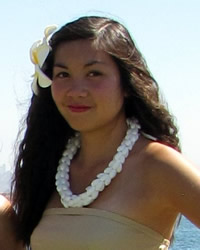The Chamorro, Guam's indigenous inhabitants, first populated the island approximately 4,000 years ago. The island has a long history of European colonialism beginning in 1668 with the arrival of Spanish settlers including Padre San Vitores, a Catholic missionary. Spain controlled the island until 1898, when it was taken over by the United States during the Spanish-American War. As the largest island in Micronesia and the only American-held island in the region before World War II, Guam was occupied by the Japanese in December 1941 and was subject to fierce fighting when American troops recaptured the island in July 1944.
Some Chamorro today have Spanish, Mexican, Filipino, and American ancestry. Chamorro have Spanish surnames because of their conversion to Roman Catholicism.
Although some now reside in the United States, the Chamorros are typically found not only on their home island of Guam but also in other South Pacific islands, including Micronesia and the Northern Mariana Islands.
The Chamorros in Micronesia make their living through the tourist industry or serving the needs of American military bases.
Traditional Chamorro culture is visually manifested in dance, unique cuisine, fishing, games, songs, and fashion. Some of these elements of their culture may have been influenced to varying degrees by people from other lands.
Guam's matriarchs continued the indigenous culture, language, and traditions. Much of the Chamorro culture exhibited today has roots in Spanish, Mexican, and Filipino cultures. In fact, cockfighting, a sport popular in Mexico and the Philippines, is an accepted cultural tradition dating back to the Spanish rule.
The Chamorro culture is based on a complex social protocol centered on pluralism, as opposed to individualism, and the offering of respect to others. Examples of expressions of their culture include kissing of the hands of the elders, passing legends verbally to the next generation, chanting, courtship rituals, and requesting forgiveness from spiritual ancestors when entering a jungle or ancient battlegrounds. Other practices predating the Spanish conquest include canoe-making, crafting stringed musical instruments from gourds, fashioning slingshots, manufacturing tools, performing burial rituals, and preparing herbal medicines under the guidance of a shaman. Master craftsmen and women specialize in weaving a wide range of items, including baskets, mats, apparel, jewelry, and burial shrouds.
Chamorros are trying to preserve their culture while adjusting to the much larger cultures they interface with.
Roman Catholicism is the predominant religion among the Chamorros, but they also have a strong Evangelical population. Chamorro also rely upon traditional beliefs in shamans who are skilled in conducting healing and medicinal rituals. Belief in spirits of ancient ancestors, TaoTao Mona, also serve as a remnant of pre-European Chamorro society.
There are limited job opportunities in the remote Pacific Islands. Even agriculture isn t always a reliable source of employment. The modern world has introduced several needs they didn t have decades ago.
Guam, like any other inhabited land mass, needs people to represent Biblical Christianity.
Pray for the Lord to meet all the physical and spiritual needs of the Chamorros in Micronesia.
Pray for the Holy Spirit to do a powerful work to revive Chamorro churches, so they can soon play a larger role in worldwide evangelization.
Pray for Pacific Islanders to find better ways to sustain their local economy.
Scripture Prayers for the Chamorro in Micronesia, Federated States.
Wallace Revels
| Profile Source: Joshua Project |










